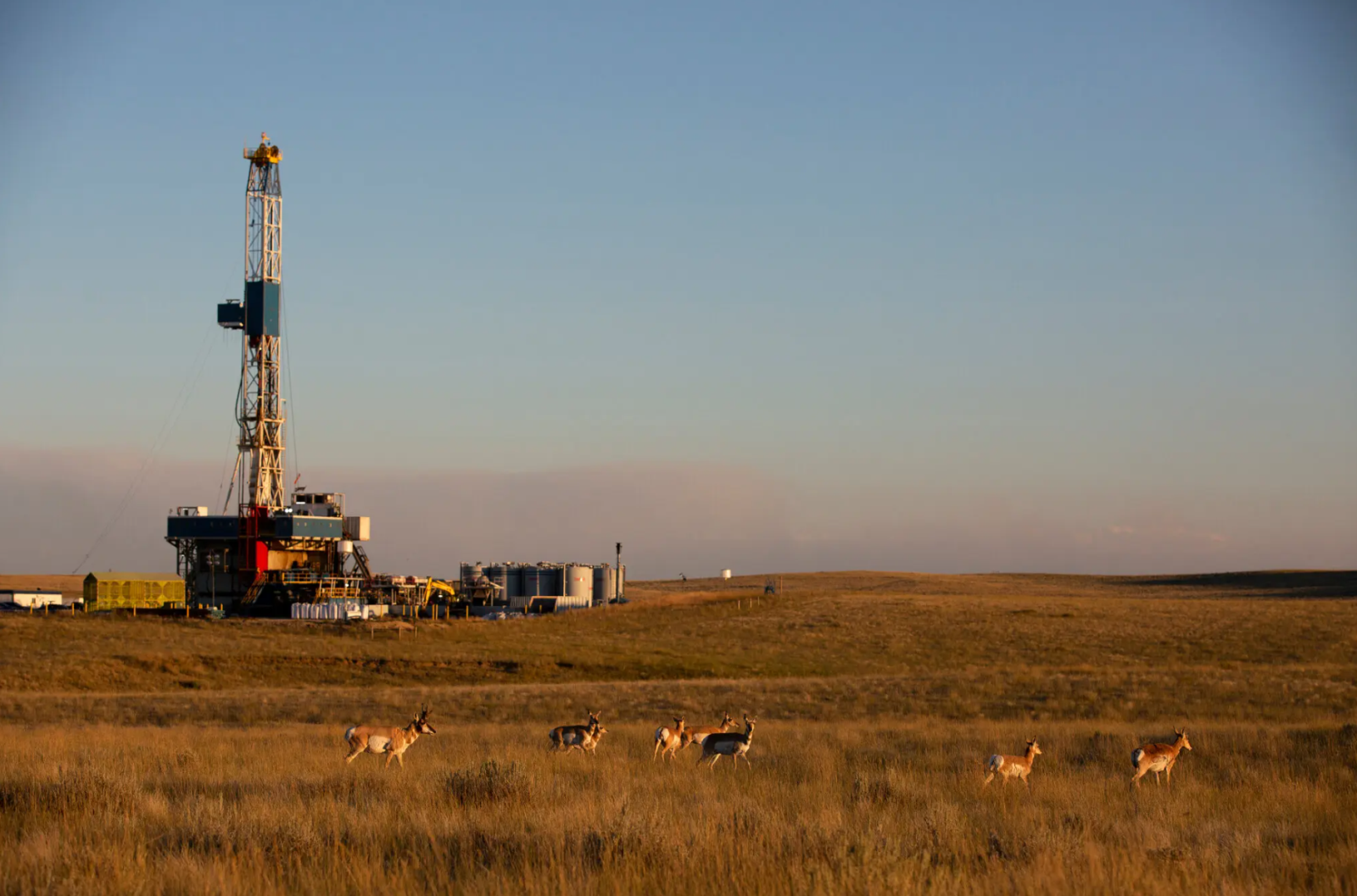
While public services, environmental monitoring and renewable energy programs have largely come to a halt, federal employees responsible for oil, gas and mining permits continue their work. Some are approving new drilling and extraction projects; others are focused on weakening pollution rules that restrict greenhouse gas emissions.
Last week, the Bureau of Land Management approved the expansion of a copper mine on public land in Utah. Days earlier, the Interior Department moved ahead with plans to open more than 250,000 acres in Wyoming and Nebraska for oil drilling and auctioned off coal rights in Montana's Powder River Basin. Meanwhile, Environmental Protection Agency officials are finalizing new regulations that would allow higher mercury emissions from coal plants, according to insiders familiar with the process.
Interior Department spokesperson Charlotte Taylor defended the activity, citing President Trump's January declaration of a "national energy emergency." She said essential energy-related work was continuing "to strengthen U.S. energy security, ensure reliable supplies, and protect consumers from disruption."
Energy analysts, however, say there is no actual emergency. The United States is already producing record levels of oil and gas, even as electricity demand grows due to AI data centers and population increases. At the same time, the administration has slowed or blocked many renewable energy initiatives that could expand clean power capacity.
"If this is truly about keeping the lights on, why restrict the cheapest, cleanest sources of energy?" asked Alexandra Adams, chief policy advocacy officer at the Natural Resources Defense Council.
The White House Office of Management and Budget has defended the continuation of fossil fuel operations during the shutdown as both "legal and appropriate." Spokeswoman Rachel Cauley compared the effort to keeping national parks open, saying that "funds can be used until they run out." She blamed Democrats for the shutdown, claiming the president was being forced to "pick and choose" which programs to fund from leftover money.
Environmental advocates accuse the administration of using the shutdown selectively to benefit the fossil fuel industry — a sector that contributed roughly $75 million to Mr. Trump's 2024 campaign. "He's showing exactly where his loyalties lie — with industry executives and political donors," said Stephanie Kurose of the Center for Biological Diversity.
The Energy Department, meanwhile, has notified nearly 200 employees of job cuts, even as it approved plans to upgrade power transmission lines across five states.
At the EPA, many employees are still working, reportedly using leftover funds from the previous fiscal year. Union representatives say the agency has prioritized regulatory rollbacks that ease restrictions on coal, oil and gas companies. Among them: a pending rule to loosen limits on mercury emissions, a potent neurotoxin linked to developmental disorders.
EPA spokesperson Brigit Hirsch said in a statement that the agency remains committed to "clean air, clean land, and clean water," but also emphasized its goal of "dismantling the Biden administration's wasteful and costly agenda."
At the Interior Department, about half of its 58,600 employees have been furloughed — except for those handling fossil fuel and mining permits. The Bureau of Ocean Energy Management announced it would suspend all offshore wind and renewable energy activities during the shutdown but continue to process "priority conventional energy projects," including new offshore oil drilling leases.
According to Kevin Book of ClearView Energy Partners, the contrasting approach simply highlights differing presidential priorities. "Under Biden, renewable projects were protected. Under Trump, fossil fuels are," he said.
As the shutdown persists, one message is becoming clear: while most of the federal government stands still, America's fossil fuel machine keeps running at full speed.